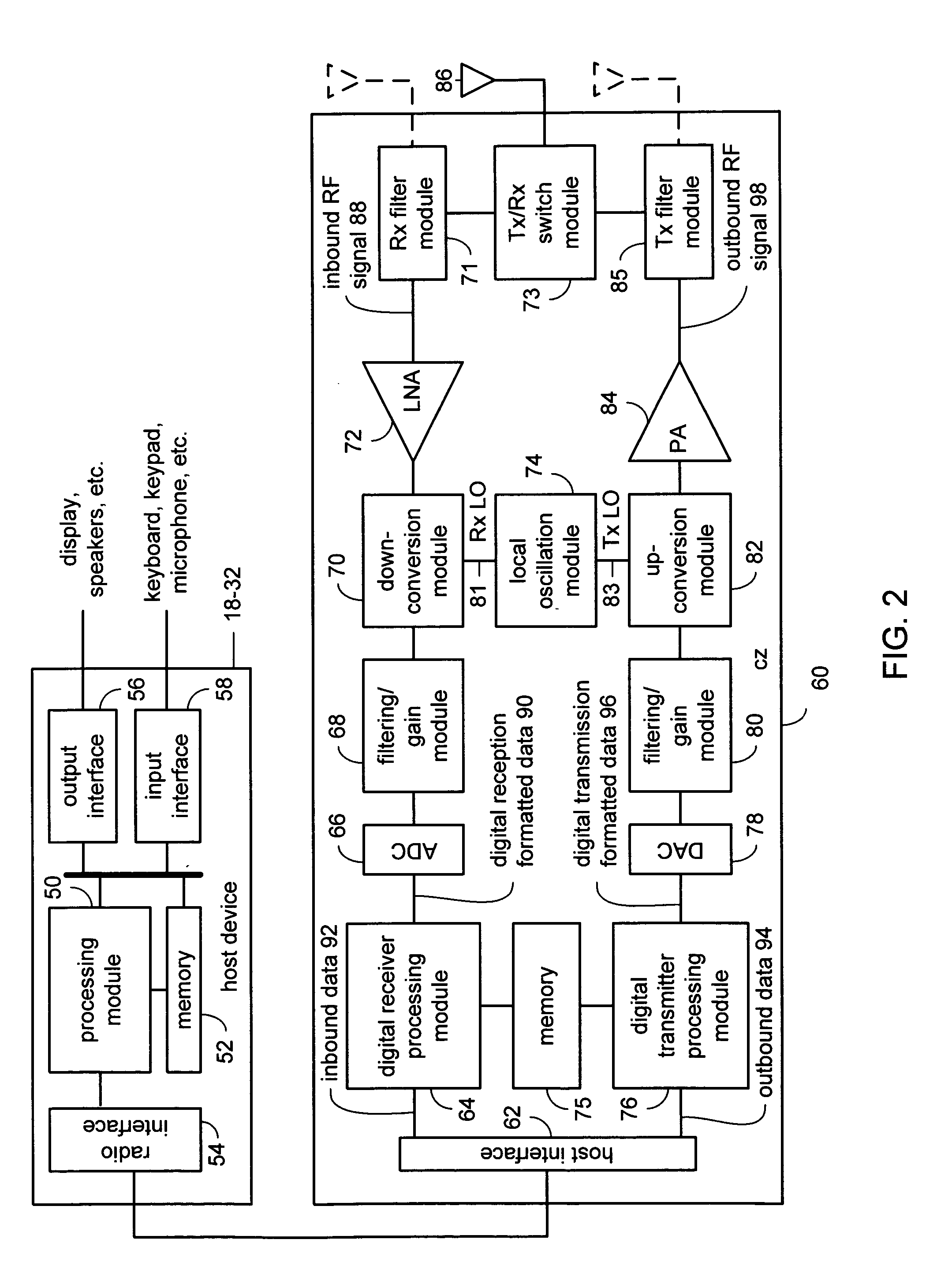Design method and implementation of optimal linear IIR equalizers for RF transceivers
- Summary
- Abstract
- Description
- Claims
- Application Information
AI Technical Summary
Benefits of technology
Problems solved by technology
Method used
Image
Examples
example 2
[0117] Consider a Butterworth type IF filter with a bandwidth of 800 kHz. The poles of such a filter are given in the following table and are specified in Radians / s:
p0−4900884.539 + j0p1−2450442.269 + j4244290.5123p2−2450442.269 + j4244290.5123
[0118] In this example, there is one real-valued pole and a pair of complex conjugate poles. Accordingly, the discrete-time equivalent filter corresponding to the impulse response invariance transformation with a sampling rate of 48 MHz is given by H(z)=∑i=03 niz-i∑i=03 diz-i(41)
[0119] where
n00.0andd0 1.0n10.00017172983538655d1−2.79466810430244n20.00065234568198411d2 2.60987701931729n30.00015495988000063d3−0.81422987961748
[0120] Suppose the desired receiver signal filter is a RRC with a roll-off factor of 0.4. FIG. 13 shows the magnitude responses of (1) square-root raised cosine filter with roll-off factor 0.4, (2) discrete-time model of the 800 kHz-bandwidth Butterworth filter, (3) digital channel select filter, and (4) desired o...
example 3
Discrete-Time Equivalent Model of the RF Transceiver Signal Filtering
[0123] In the following, a discrete-time model equivalent for the analog RF transceiver signal filter is derived. It is assumed that the signal filter can be represented as a rational function without repeated poles; that is, the Laplace transform of the signal filter can be written as H(s)=∑i=0N-1 bisi∑i=0M-1 aisi=∑i=0M-1 cis+pi(57)
where N1 are different.
[0124]FIG. 14 is a functional block diagram of a single-pole continuous-time system with zeroeth-order sample-and-hold function H1(s). To find the discrete-time equivalent filter with sampling period T, consider first the one-pole system depicted in FIG. 14. It will be shown that the discrete-time equivalent filter of this one-pole analog filter is given by: H(z)≡Z{y(nT)}X(z)=ab(1-ⅇ-pT)z-11-ⅇ-pTz-1(45)
The principle of superposition that the discrete-time equivalent of the filter (19) is given by HDT(z)=∑i=0M-1 aibi(1-ⅇ-piT)z-11-ⅇ-piT...
PUM
 Login to View More
Login to View More Abstract
Description
Claims
Application Information
 Login to View More
Login to View More - R&D
- Intellectual Property
- Life Sciences
- Materials
- Tech Scout
- Unparalleled Data Quality
- Higher Quality Content
- 60% Fewer Hallucinations
Browse by: Latest US Patents, China's latest patents, Technical Efficacy Thesaurus, Application Domain, Technology Topic, Popular Technical Reports.
© 2025 PatSnap. All rights reserved.Legal|Privacy policy|Modern Slavery Act Transparency Statement|Sitemap|About US| Contact US: help@patsnap.com



